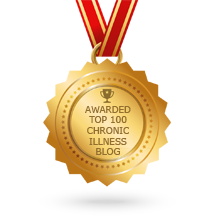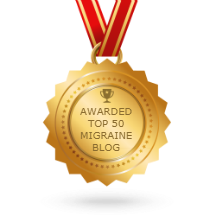The Balancing Act between Sleep and Migraines
Coming back from Headache on the Hill, my sleep schedule was completely out of wack. Between my crazy travel day on Sunday, my early morning and late flight on Tuesday, I was exhausted. It wasn't surprising that after all of the activity, I crashed and had a migraine last Wednesday. I was exhausted for the rest of the weekend, but overall I dealt with it.On Monday, I got the Botox redone. It was more painful than it's been before, but I figured that I was just recovering from last week's migraine. I was very very wrong. I cam home, went to class, then immediately went to bed. I napped for most of the afternoon. Then, after trying to do some work, I realized that I was really in pain. I went back to my room, took my DHE and tried to sleep. Except that I was so nauseous and in so much pain that I was awake until 6:15 in the morning. I got about an hour and a half of sleep that night.
I thought about sleeping through my first class. My body does this thing where I either don't sleep or barely sleep, and then it resets and I feel better. It's not a great feeling; I'm exhausted, lethargic and just not a happy camper. But this reset is necessary. I do feel better after, and if it means not sleeping for a night to have a pain-free day the next day, I'll do it!
I didn't skip my first class on Tuesday. I stayed up for the entire day until I could fall asleep later at night. It helped to re-regulate my sleep cycle, but it also sucked so much. I realized, however, that sleep has always been a difficult thing for me after my diagnosis with migraines. When I was the most sick, I would sleep for 15 hours a day on average. I would sleep, eat, sleep more, eat again, and this cycle repeated. After a while, this problem of oversleeping became a problem on not sleeping at all. I experienced "painsomnia," a term well known in the spoonie community because it refers to the inability to sleep because of the pain. Even on the rare occasions that I didn't have pain, I would stop being able to sleep. My mind would keep on racing no matter what I did to quiet it down. I learned very quickly that when this happened, there was no way that I could sleep until my brain calmed down. It was like my body felt one way, extremely exhausted, but my brain wanted to run a marathon. Sometimes, this was kinda fun. One night in high school, there was a red moon. I had a couple lights on in my rooma round 4 am, and was just watching netflix trying to relax. My mom knocked on my door and came in because she couldn't sleep either. We ended up going outside and looking at the moon together.
The early morning can be a wonderfully peaceful time. It's very serene to be the only person up in your house or dorm. Of course, I'm not sleeping so that's a bit of a problem. Over the years, we've tried a bunch of different sleep therapies. I've tried different meds, a sleep study and a bunch of different exercises. While sleeping pills can help sometimes, they have to be taken at the perfect time, otherwise I will sleep through my morning, which has happened before. So how do I deal with this?
1. Don't stress.
Yeah, not sleeping is never good. But, stressing is just going to make it harder to fall asleep. Take some deep breaths, stretch a bit, and think about something that makes you happy.
2. Move around a bit.
Sometimes moving around a bit can be the best thing. Get up, stretch, go to the bathroom. If you can move to a different bed or a couch, try that! Sometimes a new environment can help you fall asleep much easier.
3. Have a plan.
When I can't sleep the first thing I do is move, breath and get comfortable. If I really can't sleep, I'll turn on my fairy lights. I also found that watching a mindless TV show or Netflix movie can really help calm me down and get my mind off of the pain and not sleeping. However, and this is SO important, but turn down your brightness/turn on night mode on your devices. That will save your eyes and also allow you to fall asleep much better than if you had full screen brightness. I know exactly what I need to do when I can't sleep, and I go through that routine until I can finally fall asleep. Take 5 minutes and think, what works for me when I can't sleep? What makes me feel better? What makes me feel worse?
Sometimes it feels like the world is falling down when you can't sleep. I know that for me, my emotions run wild. It's so hard not to get into a doomsday mentality. But just know that this is only one night. It will end, the day will come, and you can and will get the rest that you need. As always, have an amazing, migraine-free week!








6 comments: